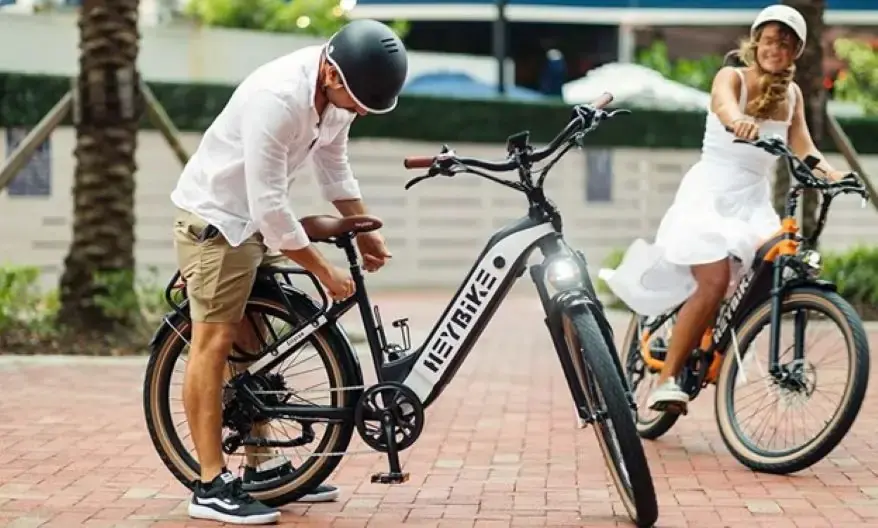Can You Ride an Ebike Without Power? Here’s What Happens
Ever wondered what happens if your Ebike runs out of juice mid-ride? You’re not alone. It’s one of the first things people think about when they consider buying an electric bike. Can you still ride it like a regular bike? Will it feel heavy? Will you be stranded?
The truth is, running out of battery isn’t the end of the world. In fact, most Ebikes are designed to keep moving, even when the motor isn’t helping you. In this post, we’ll walk through what actually happens when the power goes out—and what you can do about it.
Let’s get into it.
What Happens When the Battery Dies?
If your Ebike battery runs out, don’t worry. You won’t be stuck on the side of the road. Ebikes are built to function just like regular bicycles when needed. The pedals still work, the gears still shift, and you can ride it home without the motor.
What you will notice is the weight. Ebikes have extra parts—like a motor, a battery, and sometimes a display screen. All of that adds to the overall weight. So when the battery dies, you’re pedaling a heavier-than-normal bike. It doesn’t mean it’s un-rideable. It just feels different.
For flat roads or easy paths, you might not notice a big difference at first. But if you’re riding uphill or covering a long distance, the lack of motor help will become more obvious.
A pedal assisted ebike doesn’t stop being a bike when the motor stops. You can still ride it—it just takes a bit more effort. The key here is preparation. Know your bike. Understand how it feels when riding without any assistance. This helps you make better decisions on the road.
Is It Harder to Pedal Without Power?
Yes, pedaling an Ebike with no power takes more effort than pedaling a regular bike. The motor and battery can add 20 to 30 pounds or more, depending on the model. That extra weight matters, especially when the assist function isn’t helping.
On a flat surface, most riders can manage just fine. But you’ll feel the drag more on inclines or bumpy trails. The heavier frame, along with any gear you’re carrying, adds resistance.
For fit riders, this might just feel like a good workout. But for someone new to biking or someone using an Ebike for help with mobility or health issues, the added effort can be frustrating.
It’s worth noting that how hard it feels also depends on the gear settings. Using a low gear can make pedaling easier. So if the motor cuts out, shift into a lower gear and keep a steady pace.
How Far Can You Realistically Go Without Power?
That depends on a few things: your fitness level, the road you’re on, and how used you are to cycling.
If you’re used to riding, pedaling a powerless Ebike for 5–10 miles might not feel too bad. But if you’re on hilly terrain, even 2–3 miles can feel like a lot. On smooth, flat ground, you could go much farther. Still, it’s not something you’d want to make a habit of.
The best way to know your limit? Try a short test ride without motor assistance. Turn the assist setting off and pedal your Ebike around your neighborhood. You’ll quickly learn how the bike feels without the motor. This kind of test also helps you figure out whether you’d be okay riding home without help. It’s a smart way to plan for the unexpected.
Tips to Avoid Getting Stranded
No one wants to end up far from home with a dead battery and tired legs. The good news is, with just a bit of planning, you can avoid that.
1. Check your battery before every ride.
Seems simple, but it’s easy to forget. Make a habit of checking your charge level before leaving the house. If it’s low, plug it in—even if you think you’ll be fine.
2. Know your range.
Most Ebike manufacturers give you an estimated range per charge. Use that number as a guide, not a rule. Terrain, weight, and assist level all affect how far you can go. Always aim to stay under the limit.
3. Use the motor wisely.
Don’t blast the highest assist mode the entire time. If you’re on flat ground or cruising, drop to a lower level—or turn the motor off altogether. This saves power for the times you really need it.
4. Carry a charger or spare battery.
If your ride will take a few hours or more, pack a charger. Some riders even carry a backup battery, especially for long-distance or off-road trips.
5. Plan smart routes.
Stick to roads where you can get help if needed. Avoid isolated trails unless you’re sure your battery can make the trip.
These simple habits can make a big difference. You’ll ride with more confidence—and far less stress.
Can You Ride Without Ever Using the Motor?
Absolutely. Some riders choose to turn off motor support completely for part or all of their rides.
There are many reasons for this. Maybe you want more exercise. Maybe you want to save power for the end of your trip. Or maybe you’re riding in a zone where motor assistance isn’t allowed.
Whatever the case, your Ebike will still work. You can shift gears, pedal normally, and cruise just like a traditional bicycle. The difference is that you’re working harder than you would on a regular bike—because of the added weight and slightly different frame design.
Some Ebikes even let you switch the motor off entirely and remove the battery, which cuts some weight and makes it feel more like a standard ride.
Riding an Ebike without power isn’t the end of the world. In fact, it’s a reminder that Ebikes are still bikes at their core. They’re just a little heavier and a lot more versatile.
If your battery dies, you can keep pedaling. It may feel tougher, especially on hills, but it’s totally possible. With a little planning and a good understanding of your bike, you’ll rarely find yourself in a tight spot. So yes—you can ride your Ebike without power. Just be ready for the ride to feel a little different.
Additionally, to stay updated with the latest developments in STEM research, visit ENTECH Online. Basically, this is our digital magazine for science, technology, engineering, and mathematics. Furthermore, at ENTECH Online, you’ll find a wealth of information.





